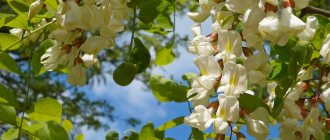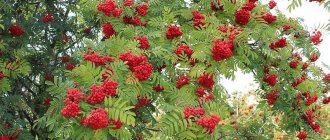Attractive view and more
Stachys is a perennial and annual herbaceous plant. It belongs to the Lamiaceae family. Its historical homeland is the subtropical regions of China. Even today, its wild forms are found on mountain slopes whose height is about 3200 m.
The plant has other names:
- clean;
- tenacious;
- sheep (rabbit) ears;
- khorogs;
- Chinese (Japanese) aritishok.
Translated into Russian, the word “stachys” means “spike,” which is directly related to the shape of the graceful inflorescence. The tenacious creature feels great in central Russia, the Altai Territory and the western regions of Siberia.
Some types of crops are compact subshrubs.
The plant has erect, fleecy, slightly branched stems that grow up to 50 cm. Dense oval-shaped leaf plates, reminiscent of hare's ears, are attached to them. The edges are jagged or solid. They are covered with many fibers, soft to the touch. The foliage is collected in an elegant rosette and colored bluish-green.
In mid-summer, the stachys plant adorns a majestic inflorescence in the form of a false spike. It consists of 7-10 buds, painted in the following colors:
- purple;
- lilac;
- yellow;
- white;
- pale blue;
- pink.
The shape of the flowers resembles miniature bells, consisting of five petals. Each of them has a narrowed base. The flowering process continues until early autumn, after which fruits appear in the form of boxes. Inside are seeds in the form of triangular nuts.
To get a spectacular frame for borders, you need to remove flowering shoots.
The strong root system goes deep enough into the ground. It is distinguished by fleshy branches. Some species have tuberous formations that are used to prepare delicacies.
general description
Stahis is a representative of the Yasnotkov family. It is a herb or subshrub with an annual or perennial life cycle. In harsh northern winters, it may require annual planting, however, its tuberous roots tolerate cold well and usually withstand wintering in a temperate climate zone. Found on all continents except Australia and cold Antarctica. It has tuberous roots and tetrahedral shoots with opposite leaves, which gives the vegetable a vague resemblance to nettles. The bush has powerful branching, due to which the area is a continuous dense clump; its height can reach 0.7-1.1 m. The leaves have a whitish dense pile, giving them an interesting and unusual felt appearance.
Botanists have described about three hundred varieties of this plant.
Cute stachys plant: popular types
Biologists count over 300 varieties of bluish-green “shaggy” crop. However, not everyone has gained popularity. About 10 names are used in gardening. Let's get to know some of them.
Chistets Woolly
The plant is distinguished by the bizarre shape of its leaf plates, covered with small fibers. It easily tolerates frost and spring temperature changes. Blooms all summer long. The buds are purple or deep pink.
Popular varieties:
- "Primrose Heron" (green-yellow foliage);
- “Cotton Boll” (inflorescences consist of large buds);
- “Silver Carpet” (no flower stalks, reminiscent of ground cover crops);
- “Big Ears” (plate length about 25 cm).
The exquisite plant “Stachis Woolly” is ideal for decorating the territory of a country house. Low-growing varieties are planted along the edges of garden paths. Tall shrubs fit into the landscape of alpine hills.
Stachys grandiflora
The perennial grows up to 30 cm. The plates are round or heart-shaped. Erect peduncles reach half a meter in height. The false ear is decorated with large buds.
Famous varieties:
- "Alba" (snow-white petals);
- "Superba" (red or pale pink buds).
The crop is often grown in city flower beds. In summer cottages they are planted next to the fence or at the entrance to the residence.
Chinese artichoke (Siebold's cleaner)
The variety is a vegetable crop. Stachys tubers, which are formed in the root system, are used for cooking. Outwardly, they look like miniature mother-of-pearl shells with a spiral shape. The maximum weight of one fruit is about 10 g. The above-ground part of the plant grows up to 70 cm. The buds are colored deep pink. The most popular varieties: “Barrel” and “Shell”.
In China, Europe and Asia, artichokes are consumed not only raw, but also:
- marinate;
- dried;
- boil;
- fried.
Leaf blades are added to salads. Hot drinks are prepared. For example, they cook it for only 7 minutes. And they are pickled according to the same recipe as cucumbers. Dill, garlic and spices are added to the brine.
Well-known tall varieties include stachys “Bolotny”, “Forest” and “Direct”. The maximum height of crops is about 1.2 m.
Chistets in landscape design
Abundant flowering and decorative foliage make these perennials ideal for planting in the front and middle parts of various flower beds. Woolly grass is highly in demand in cases where it is necessary to sod a small area in a short time. It is also an interesting edging plant.
Although not many gardeners are aware of the beautifully flowering chickweeds, they are a unique addition to any sunny flower garden and are especially good in natural mixborders. Blooming chistae fits almost any style and goes well with many garden plants - annuals, perennials and low coniferous and deciduous shrubs. But, above all, it is an excellent partner for coneflowers, rudbeckias, gaillardias, geraniums, bells, delphiniums, and various cereals. Chistets can also create interesting combinations with roses. To achieve the greatest decorative effect, it is better to plant christmas and caps in groups.
Secrets of growing in a summer cottage
The crop is propagated using traditional methods: dividing the bush and seeds. There is a simple technology for each. Sowing of seeds is carried out in late autumn in small boxes.
The following follows according to the instructions:
- fill containers with light substrate;
- make grooves with a spatula or ruler;
- carefully lay out the seeds;
- sprinkle with soil;
- water generously from a spray bottle;
- covered with cellophane.
The boxes are moved to a warm room. Every day the film is removed to ventilate the planting material. After 30 days, tender shoots will appear, after which the covering is removed. Water the seedlings as the soil dries. When two leaves appear, the seedlings are transferred to separate pots. At the end of May to an open area. Place them at intervals of 20 cm from each other.
Drainage material and a layer of humus mixed with soil are placed at the bottom of each hole.
There is an easier way to propagate stachys - by dividing the bush. A beautiful plant is chosen for the procedure. Carefully dig out of the garden bed. Shake off the roots and then separate them into parts. Each must have at least 3 sheets. The resulting specimens are transferred to a new site. Plant at a distance of at least 30 cm. Water abundantly.
In order for stachys to successfully take root, it is placed in a well-lit place. If a shadow appears, it is only for 2-3 hours. Otherwise, it will lose its decorative color. The best option is an open sunny area where there are no drafts.
The optimal soil acidity level does not exceed 6.5 pH. It must be water- and breathable. A sandy or loamy type of soil is suitable. When planting chistets, ash, peat, and rotted manure are added to the ground.
The plant does not like extreme heat. Withstands up to +30°C.
Dividing the bush
The method is usually used for perennial species not grown as a vegetable crop. A developed adult bush is selected, which is dug up with roots and divided so that each division has part of the foliage and root system. The newly planted parts take root instantly and grow very quickly. By dividing the bushes in early spring, you can get young specimens flowering as early as May of the same year. Stachys can be propagated by division in other warm seasons, but with the condition that the weather is not too hot and sunny.
Rules for caring for an “alien” from China
Although stachys is an unpretentious culture, there are still several important procedures. Without them, it will wither and lose its decorative appearance. After planting, the stachys is carefully observed. Regularly fluff up the top layer of soil. Remove weeds.
Water several times a week. Much depends on the climatic conditions of the area where it grows. During drought, the soil is moistened in small portions in the morning and after sunset. After 5-6 hours, after each procedure, the soil is fluffed up.
Feeding is carried out in three stages. In March, when the growing season begins, a solution of ash and nitrogenous substances is added. Before flowering begins, the plant is fed with rotted manure and complex fertilizers. At the end of summer and beginning of autumn, nitrogen, phosphorus and potassium preparations are used. This will help the crop to successfully withstand the winter cold. In autumn, almost all the foliage is cut off. Leave a few pieces in the center of the outlet. In northern latitudes, stakhis is covered with mulch or agrofibre.
It is advisable not to feed vegetable species with nitrogen fertilizers. Otherwise, the fruit will lose its taste.
Mulching
Using mulch solves the weeding problem and perfectly regulates soil moisture. Suitable materials include last year's fallen leaves, both mature and not yet completely rotted compost, and soaked sawdust. Mulch can be poured before hilling the bushes. Partially entering the soil during hilling, it increases the aeration and nutritional parameters of the soil.
The use of straw as mulch is not recommended, as it often leads to an increase in the mouse population in the area.
A storehouse of useful components
Stachys fruits and foliage are a low-calorie product. They contain:
- proteins;
- carbohydrates;
- alimentary fiber;
- iron;
- calcium;
- manganese;
- selenium;
- potassium.
In addition, Chinese artichoke is a storehouse of vitamins. The following compounds were found in it:
- retinol;
- thiamine;
- riboflavin;
- a nicotinic acid;
- carotene;
- folic acid.
The plant, rich in valuable components, has a beneficial effect on the human body. The medicinal properties of stachys woolly are manifested in the treatment and prevention of diabetes mellitus. The presence of dietary fiber stimulates the gastrointestinal tract. Minerals lower blood pressure. Regular consumption of artichoke strengthens the body's defenses.
We looked in detail at how to plant and care for stachys. Photos help to present the plant in all its glory. The chemical composition revealed the value of the exotic product. Why not grow this cute ornamental plant in your garden?
Propagation by cuttings
Cuttings are another quick and successful way to produce new Chinese artichoke plants. For cutting, use the lower parts of the stems of well-developed specimens. Rooting is quick; just stick the cuttings into the substrate or put them in water. It is permissible to immediately plant them in a permanent place to eliminate the stage of subsequent transplantation. During adaptation and rooting, it is important to maintain moderate soil moisture and avoid scorching sunlight.
Trimming
The procedure is not mandatory, but for those for whom it is not important to see a blooming planting of stachys, it is recommended to trim the arrows of the peduncles as soon as they emerge from the leaf rosette. The plant spends a lot of energy and nutrients on flowering, which could be used to form a richer harvest.
In addition, the bush itself can be pruned due to the fact that, growing rapidly, it becomes sagging and loses its lower branches, which spoils its appearance.
Growing stachys from seeds using seedlings
This plant is ideal for growing as an ornamental or mound in relatively warm climates. Outwardly, it is light, seemingly covered with a white coating.
If you step on it with your bare foot, you can find yourself in heaven - it is so pleasant, silky and soft. In order for you to have such a decoration in your garden, you need to grow it correctly.
Did you know?
Stachys or Chistets Byzantine, or sheep's ear, is a perennial plant.
Its height barely reaches 60 cm. Usually the leaves spread along the ground, covering it with a velvet blanket. This plant can be propagated by seeds. They have good germination. February or March are suitable for planting seeds.
They are sown in prepared closed soil, which can be fertilized with organic matter or minerals, and watered.
Now everything needs to be covered to create a greenhouse using oilcloth or glass. Approximately 30 days
enough grains to sprout from the ground.
Therefore, you need to know with whom he will make friends and will not compete. Among his companions:
- silver wormwood;
- sheep;
- astrantia;
- pink rose bushes.
A rather unpretentious plant, Stachys woolly
both in planting, and in choosing soil, location, and in care. But still, he keeps several secrets.
Watering, weeding and loosening the soil
As we have already noted, stachys works well in dry soil, where there is no stagnation of water. It still needs watering only in very dry and hot summers.
You will notice his displeasure by the falling leaves. in the evening, when the sun no longer shines on the plant. Young seedlings can be planted in the soil in the spring, since old ones can stretch upward, throwing off the lower leaves and thus creating voids in the flowerbed.
If the stems or leaves are too long or completely dry, then they need to be cut off.
. Do the same with the rhizomes that go out throughout the summer.
In the summer, in addition to watering, stachys requires soil care. It needs to be loosened occasionally, despite the fact that the plant does not produce very deep roots. This can be done every 14 days
.
It is better to hill up at your own discretion, but not more than 3 times. This gives the plant space to develop. There is no need to rush to loosen the soil. Do this when your leaves are about 20cm
long.
Fertilizer application
It does not need frequent application. It is enough for him to receive a portion once a season. Young seedlings can be planted in such soil in the spring.
Pruning inflorescences
As you noticed, Stachys, by its description, is an ornamental plant
. It is an ideal option for decorating borders and streams.
Of course, the leafy part is valued more than thin stems with a cap of small and impenetrable flowers. Can you imagine how much effort a plant puts into shooting such an arrow?
Naturally, all this is compensated by new shoots; new leaves die or do not develop. For decoration, we need the opposite.
To save leafy velvet, you need to cut off the arrows of the inflorescences. The shorter you make it, the better. The optimal time for pruning is immediately after the first wave of color has passed.
If you didn’t have time, then next year at the beginning of May or even the end of April, watch how new shoots form - they need to be cut off immediately
. With the onset of warm and sunny days during the period of active growth, the plant will devote all its energy to foliage, which will cover the ground and will delight you with its luxurious appearance until the first frost.











